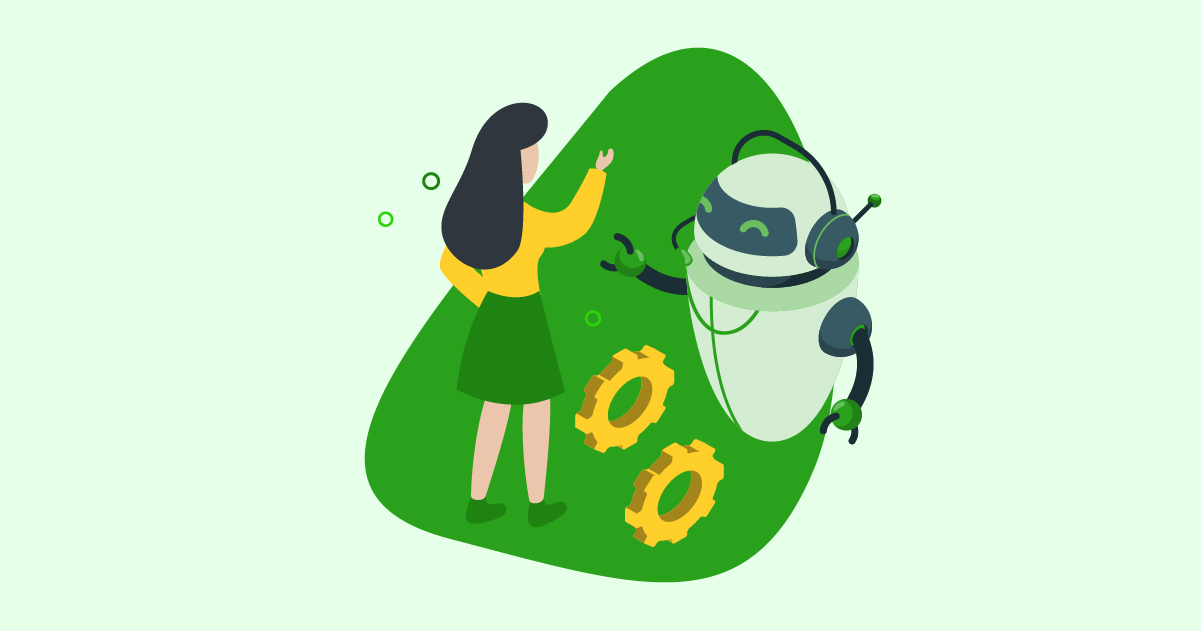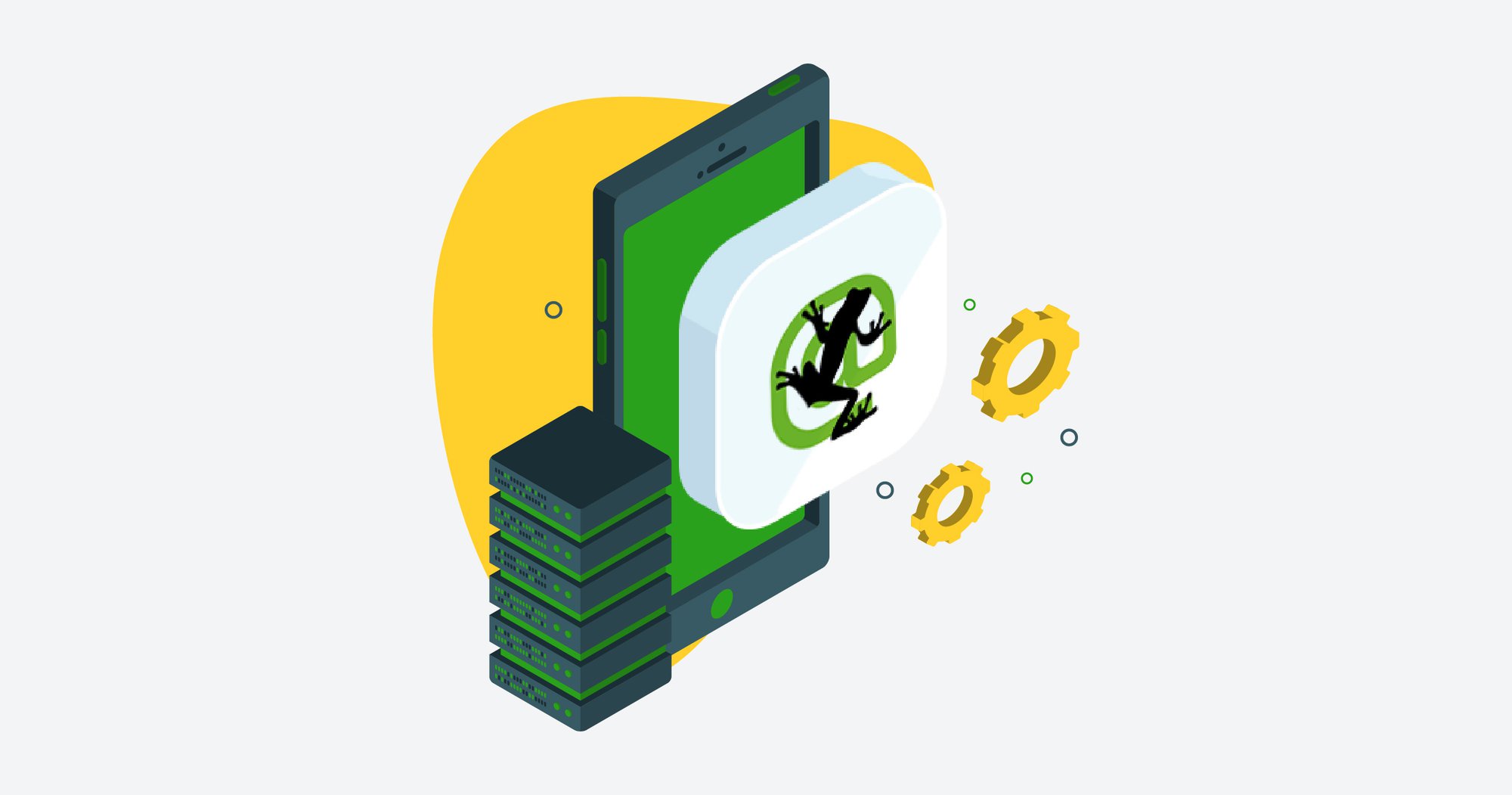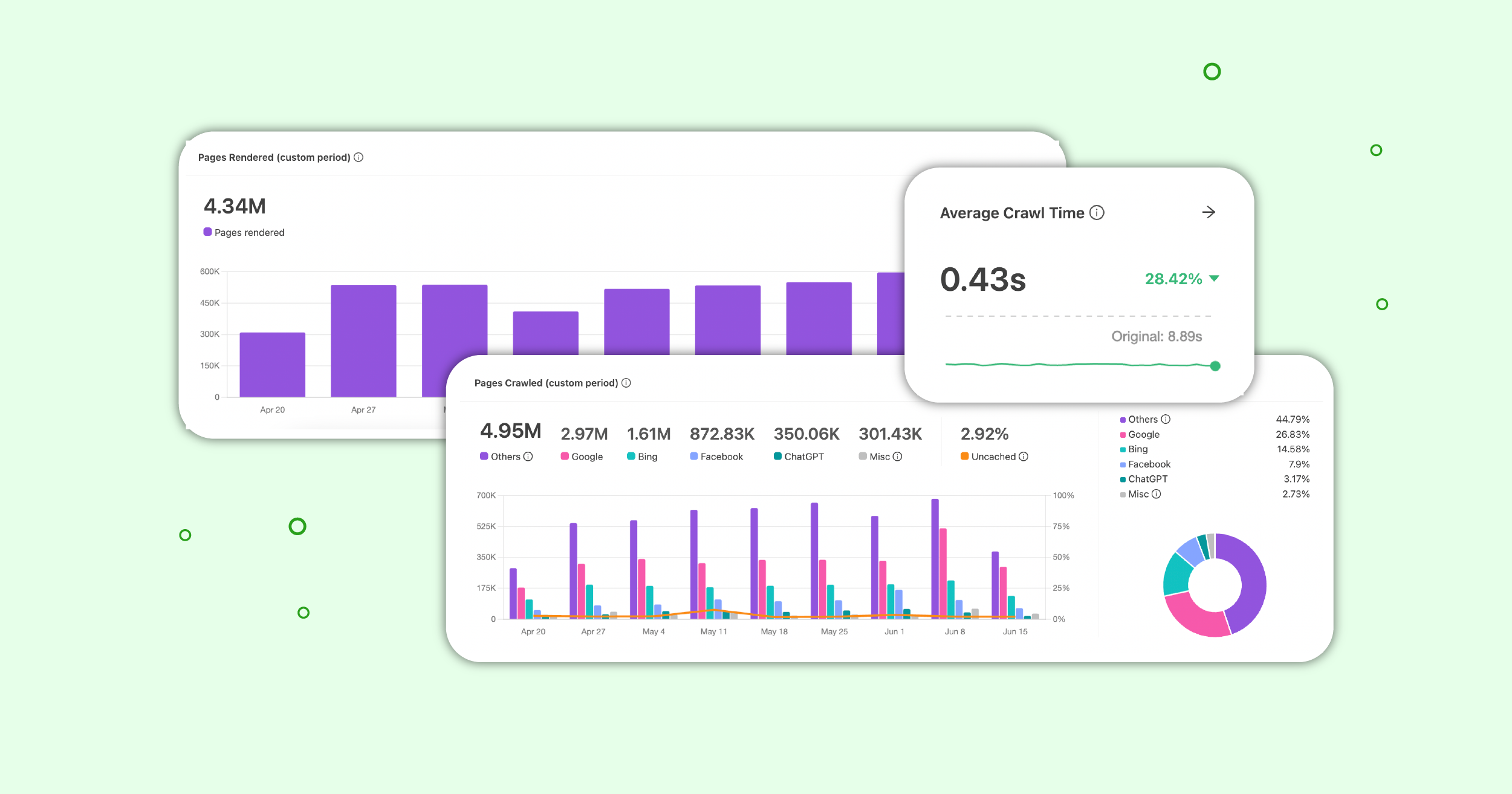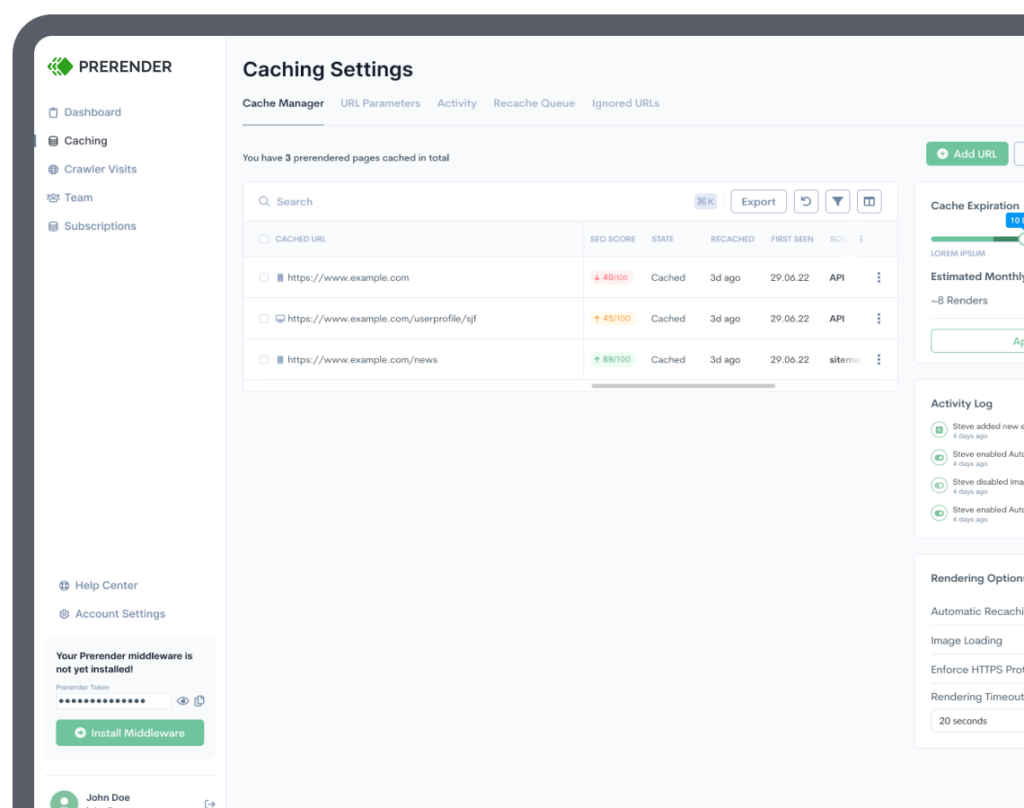Your website hosts two types of visitors: humans and bots.
Human visitors browse your pages, engage with content, and convert into customers. Bots, on the other hand, are automated programs that visit your site to perform specific tasks, some of which are beneficial and others harmful.
Both bot and human visits affect your website traffic, and the challenge is determining the actor behind it. Are those increasing pageviews from potential customers or just bot activity?
In this guide, you’ll learn how to differentiate between human and bot traffic, identify suspicious bot activity, and strategies to protect your site. You’ll also find tools that can help monitor and manage your website traffic.
What is Bot Traffic?
In simple terms, bot traffic refers to visits to your website generated by automated software programs (aka bots). Bots make up a significant part of online activity, and their impact on your site can be positive or negative.
There are “good” bots, such as search engine crawlers (e.g., Googlebot,) that help index your site for visibility in search results. Other good bots assist with tasks like monitoring website performance, optimizing ad displays, or providing customer support via chatbots.
However, not all bots come bearing gifts. There are “bad” bots that force their way into your site, misuse its resources, distort your analytics, and compromise security. These include scrapers that steal data, spam bots that flood forms or comment sections, and DDoS bots that overwhelm servers. It’s these malicious bots that give bot traffic a bad reputation, and rightly so.
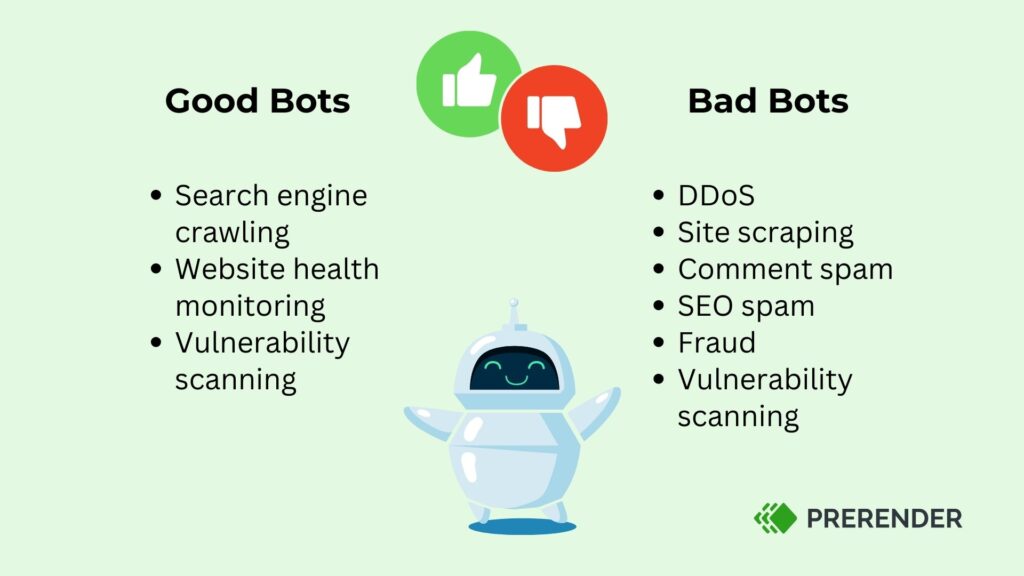
Ultimately, the impact of bot traffic, whether good or bad, depends on the bot’s intention and your site’s preparedness to handle it.
Resource: Check out this thorough guide on optimizing your website for humans and bots.
Why Is It Important to Differentiate Between Bot and Human Traffic?
A 2024 study by Statista revealed that bots account for over 40% of all internet traffic, with humans making up just 50.4%. Nearly half of all website traffic came from bot activity, and a substantial portion of those were bad bots.
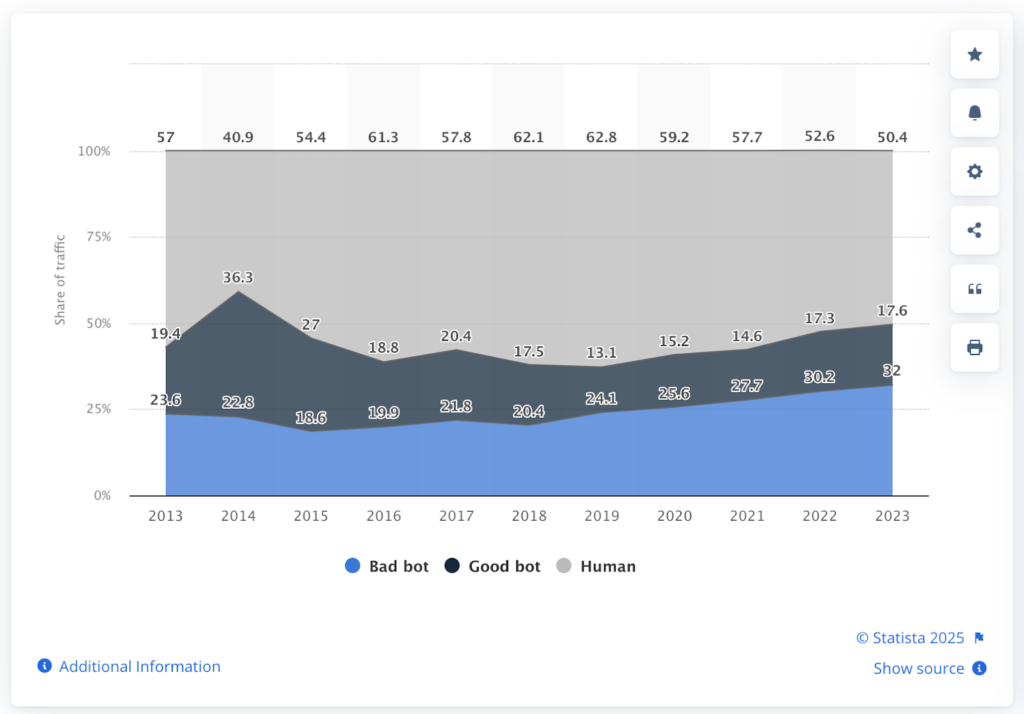
As a website owner, this raises an important concern: if your website traffic sources are bot-driven, how can you accurately measure key performance indicators like engagement, conversion rates, or marketing ROI? The answer is you can’t—at least not without filtering out bot activity.
By identifying and differentiating between bot and human traffic, you can:
- Accurately assess your site’s real performance and health.
- Make better data-driven decisions free from bot-skewed analytics.
- Optimize your marketing and SEO efforts for genuine visitors.
- Protect your site and mitigate risks associated with malicious bots.
How to Distinguish Between Bot vs. Human Traffic
Now that we have identified the types of bots and realized their practical danger let’s learn how to detect them. Here are six methods to differentiate between bot and human traffic:
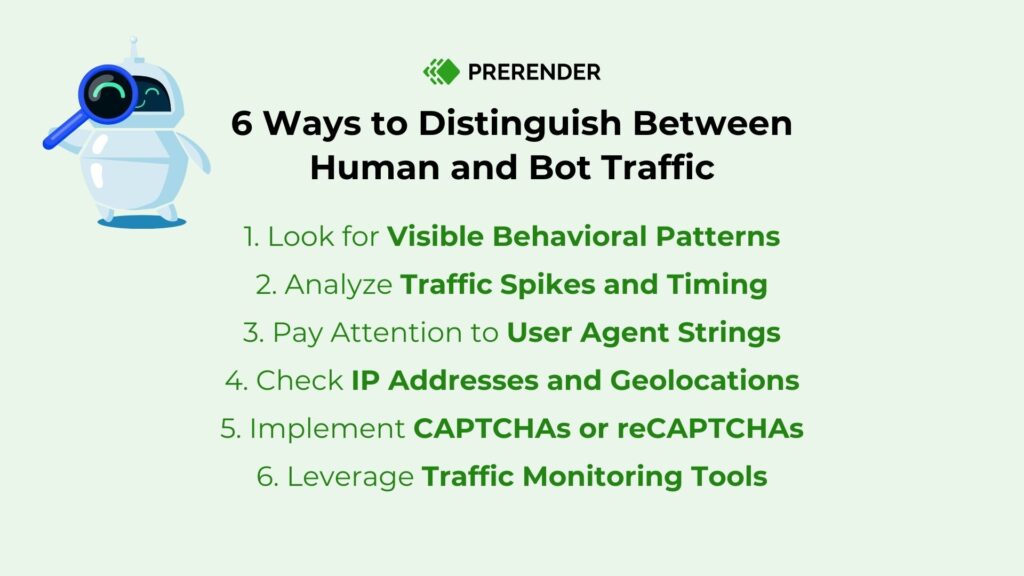
1. Look for Visible Behavioral Patterns
Human visitors typically interact with your website in unpredictable and dynamic ways. They’ll click on different links, scroll through your content, spend time reading articles, fill out forms, share your articles, or even make a purchase.
Bots, however, behave differently—predictably. They tend to send repetitive requests, visit multiple pages within seconds, or not engage with your content. For example, it’s potential bot activity if you consistently notice spikes in pageviews but insignificant time spent on the pages.
By analyzing these patterns, you can flag actions or traffic that seem “too robotic” to be human.
2. Analyze Traffic Spikes and Timing
Increasing site traffic is one of the joys of every website owner. However, a sudden spike in visitors shouldn’t excite you too much until you understand the source and nature of these visits. While viral content can cause legitimate surges, consistent, unusual spikes are a red flag.
Assuming your website typically experiences low traffic during certain hours and you notice consistent spikes during those times, dig deeper. This is because bots often generate traffic in bursts, especially during malicious activities. So, by close monitoring, you can identify suspicious activities and take necessary actions to protect your site.
For more clarity, conduct a thorough human traffic analysis. Examine their traffic patterns, timing, sources, behavior, and other indicators to distinguish human activities from bots properly.
Resource: Facing sudden drops in your organic traffic? Here’s how to fix it.
3. Pay Attention to User Agent Strings
When users visit your site, their browser sends a user agent string to your server, which identifies the browser and operating system. Bots often use generic or outdated user agents to mask themselves and blend in with legitimate traffic.
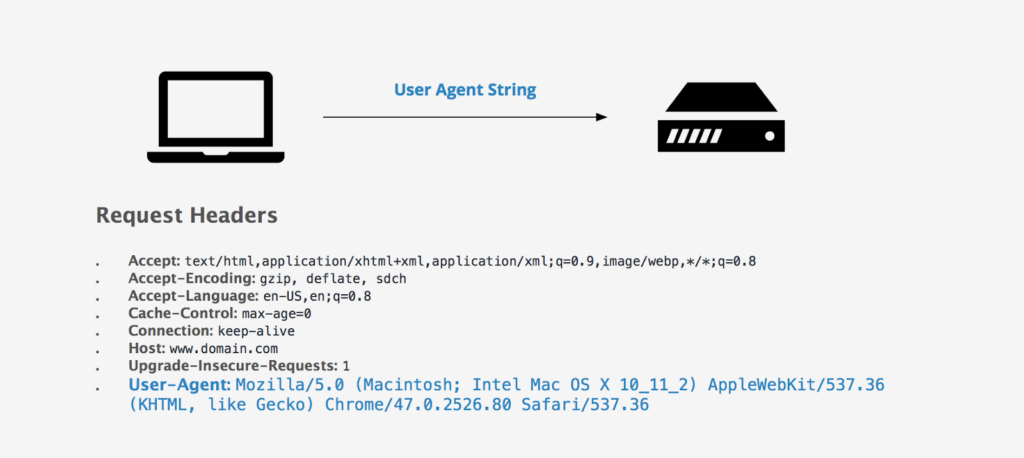
For instance, if your analytics show a large percentage of visitors using outdated browsers like Internet Explorer 6 (which is largely obsolete), it’s likely bot traffic. With tools like server logs or web application firewalls (WAFs), you can identify and flag these suspicious traffic sources.
4. Check IP Addresses and Geolocations
Malicious bots often operate from server farms or unknown geolocations. A quick check of your server logs can reveal clusters of traffic originating from specific IP ranges that don’t match your usual audience demographics.
For example, if your business primarily serves local customers, but a large portion of traffic suddenly comes from unknown IP addresses in a distant country, it could indicate bot activity.
Moreover, bots are often programmed to attack or scrape from a single location until they’re blocked. So, repeated requests from the same IP address are a strong indicator of bot behavior.
5. Implement CAPTCHAs or reCAPTCHAs
A CAPTCHA test determines whether a user is a human or a bot by requiring tasks like identifying objects in an image or typing out distorted texts. Humans pass the test, but bots fail because, as expected, they cannot decipher the tasks.
However, it’s important to note that CAPTCHAs are not foolproof—sophisticated bots can bypass basic CAPTCHAs. Instead, they can serve as a first line of defense against less advanced bots.

6. Leverage Traffic Monitoring Tools
Traffic monitoring tools, such as Google Analytics and Cloudflare, offer bot detection features that analyze session duration, bounce rates, pages per session, unusual geographic locations, and other metrics to filter out automated traffic.
Google Analytics, for example, offers bot filtering options that automatically exclude known bots from your reports, ensuring more accurate data. Similarly, Cloudflare offers real-time bot mitigation by blocking suspicious bots before they can affect your site.
Can All Bots Be Blocked?
No, not all bots can and should be blocked. While there are malicious bots that disrupt and harm websites, not all bots are enemies.
Good bots are important to your website and the internet’s ecosystem, and blocking them can harm your site’s visibility, SEO, and overall functionality.
Instead, focus on identifying and filtering out malicious bots while allowing the helpful bots to function.
How to Manage Bot Traffic and Protect Your Website
Using targeted bot filtering strategies, you can manage traffic sources, protect your site, and make better data-driven decisions. Below are eight practical strategies to manage bot traffic:
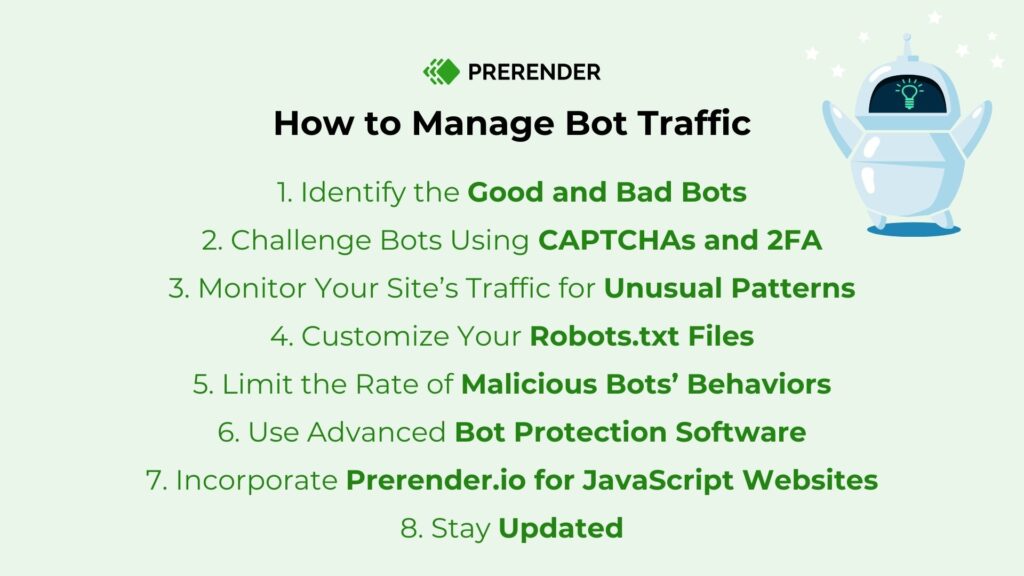
1. Identify the Good and Bad Bots
Start by identifying the helpful and harmful bots. Google Search Console can help identify and monitor the behavior of different bots visiting your site. You should permit the access of only useful bots to conserve your server resources—particularly those assisting with SEO, marketing, and customer support.
2. Challenge the Bots Using CAPTCHAs and Two-Factor Authentication (2FA)
CAPTCHAs remain one of the most common ways to restrict bot activity but can frustrate genuine users if implemented carelessly.
A good practice is strategically implementing them only in sensitive areas, such as account registration pages, login forms, or checkout processes, where bots can spam or cause significant damage.
For enhanced security, you can pair CAPTCHAs with a second form of verification like 2FA. This could be a code sent to a mobile device or an app-generated token. 2FA reduces the risk of unauthorized access and ensures that even if a bot bypasses the first authentication factor, it cannot easily pass the second.
However, like CAPTCHA tests, 2FA implementations should be strategic and user-friendly to maintain a positive user experience.
3. Regularly Monitor Your Site’s Traffic for Unusual Patterns
Monitoring your site’s traffic for irregularities is another way to protect your site from bad bot activity. You can set up alerts for abnormal traffic patterns and investigate their sources to quickly identify and mitigate bot activity. Use analytics tools like Google Analytics or server log analysis to identify anomalies like:
- Unusual traffic spikes
- Unusually high bounce rates
- Excessive requests from specific IP addresses
4. Customize Your Robots.txt Files
A robots.txt file guides and instructs web crawlers on parts of your site they’re allowed and not allowed to crawl and index. It controls your site’s access to essential bots while restricting unwanted ones.
Regularly audit your robots.txt file to ensure it aligns with your SEO goals and doesn’t unintentionally block essential crawlers. For the best practices for implementing this strategy, check out our robots.txt guide.
5. Limit the Rate of Malicious Bots’ Behaviors
Rate-limiting controls the number of requests a single IP address can make within a specific time frame. When you set a limit, your system monitors incoming requests from each IP address or user. If the limit is exceeded, subsequent requests are blocked, delayed, or redirected.
The table below shows examples of rate-limiting rules and their consequences. For example, if a bot or user tries to log in more than five times within one minute, the system temporarily bans their IP for a set period.
| Action | Rate Limit | Time Frame | Consequence |
| Login attempts | 5 | 1 minute | Temporary IP ban |
| Page requests | 60 | 1 hour | IP block for 24 hours |
| API calls | 250 | 1 day | API key suspension |
| Form submissions | 10 | 25 minutes | CAPTCHA test |
The rate-limiting technique helps prevent excessive bot activity, reduces server overload caused by excessive bot requests, and secures your site.
6. Use Advanced Bot Protection Software
There are numerous solutions designed to help website owners manage bot traffic. They offer robust protection against advanced bots while allowing good bots to flourish.
These tools use AI, behavioral analysis, IP reputation databases, machine learning, and device fingerprinting to detect and block malicious bots. They also offer real-time analytics and alerts to enable quick responses to bot threats.
In addition, they integrate seamlessly with existing cybersecurity infrastructure, including WAFs and content delivery networks (CDNs), to give you a cohesive defense strategy.
7. Incorporate Prerender.io for JavaScript Websites
JavaScript (JS) websites often face SEO challenges because search engine bots struggle to process JS content properly. While search engines like Google have improved their rendering capabilities, processing JS content remains resource-intensive, causing delays or incomplete indexing that can hurt your SEO efforts.
Note: If you’re new to Google’s JS rendering challenge, there’s more about why JS complicates indexation here.
To solve this problem, use a technical SEO tool like Prerender.io. It serves static, fully rendered versions of your web pages to search engine crawlers, ensuring that all content and SEO elements are easily accessible and indexed while maintaining the dynamic experience for human users.
Additionally, Prerender.io analyzes request headers and user agents to differentiate between human visitors and verified bots like Googlebot and Bingbot. For a comprehensive approach, consider combining Prerender.io with advanced bot detection solutions to filter out unnecessary bot traffic and sophisticated bots mimicking human behaviors. This efficiently balances SEO for Javascript websites with robust security.
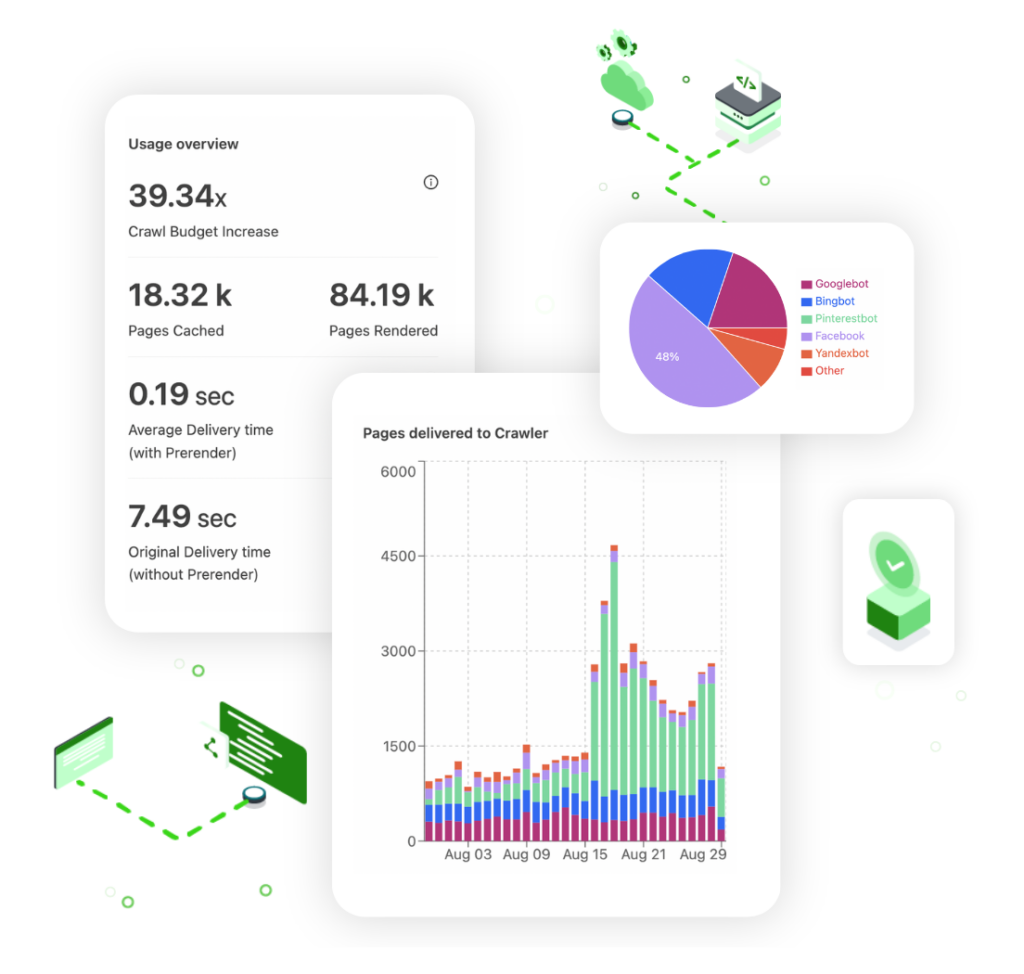
Resource: Check out a breakdown of Prerender.io’s process and benefits.
8. Stay Updated
Bots are persistent and constantly evolving. You may find that what worked a few months ago is no longer effective or that new bots are appearing that need to be blocked or managed.
Either way, it’s important to keep up with the latest trends by subscribing to cybersecurity newsletters, attending webinars, and following industry reports to ensure that your site always remains protected.
Make Your Site Loved by Bots and Humans Alike with Prerender.io
Understanding the distinction between human and bot traffic allows you to optimize your website performance and protect it from threats. By implementing the tools and strategies listed in this guide, you can ensure your analytics remain accurate, your marketing efforts stay effective, and your website remains secure.
If your website relies heavily on JavaScript and suffers poor crawling and indexing performance, try out Prerender.io. Our dynamic rendering solution boosts your JS page’s crawling performance by up to 300x and indexing speed by 260%, improving your site’s visibility on SERPs.
Ready to experience Prerender.io’s impact on your website and technical SEO performance? Sign up today and get 1,000 FREE renders per month.
